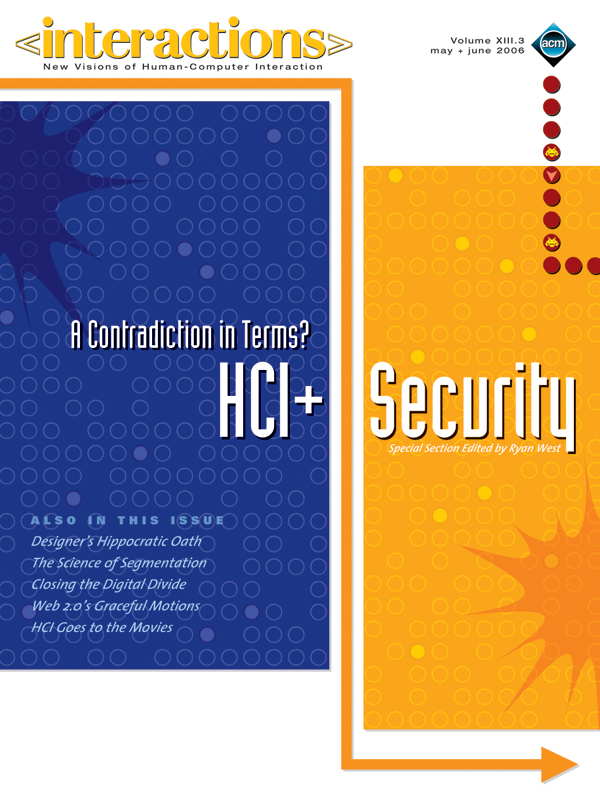Authors:
Lorrie Cranor
Security- and privacy-related tools often feature graphical (or in some cases textual or audio) indicators designed to assist users in protecting their security or privacy. But a growing body of literature has found the effectiveness of many of these indicators to be rather disappointing. Security researchers often evaluate the effectiveness of systems by their ability to resist attack. They typically envision a threat model in which an attacker attempts to "fool the software" by disabling the security software, performing a malicious action in an undetectable manner, or deceiving the software into interpreting a malicious action as an innocuous one.…
You must be a member of SIGCHI, a subscriber to ACM's Digital Library, or an interactions subscriber to read the full text of this article.
GET ACCESS
Join ACM SIGCHIIn addition to all of the professional benefits of being a SIGCHI member, members get full access to interactions online content and receive the print version of the magazine bimonthly.
Subscribe to the ACM Digital Library
Get access to all interactions content online and the entire archive of ACM publications dating back to 1954. (Please check with your institution to see if it already has a subscription.)
Subscribe to interactions
Get full access to interactions online content and receive the print version of the magazine bimonthly.







Post Comment
No Comments Found